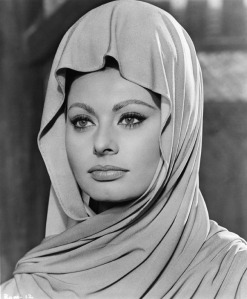In part one of these reflections; we considered perspectives on what the Gnostics were pointing toward in their vivid and at times anarchic mythologies. It’s hardly surprising that more mainstream Christians got pissed with them – while outwardly appearing orthodox in many ways, their take on the nature of the divine was radically subversive.
For the majority of the Gnostics, the realm of nature and the God of the Old Testament were incompatible with the picture of the divine painted by Christ in the New Testament. If both Yahweh and the natural world were capricious and violent how could one reconcile this with the “heavenly Father” that Jesus believed was ever listening and attentive? For many Gnostics, the tribal, desert God of the old covenant represented at best an outdated perception of the Pleroma’s true nature; at worst this “God” was a deceiver actively seeking to blind humanity to the divine spark within. While I personally don’t buy into such beliefs, they do reflect an important human dilemma as we seek to evolve metaphysical principles that we feel are more congruent with our own experience of life.
In reflecting on these themes, I think it’s fair to own my own biases as both an aspiring Process theologian and a creative magical practitioner. For the uninitiated, Process theology is deeply interested in what the emergence of religious myth reveals about the shape and concerns of human consciousness. Even a cursory study of religious phenomena reveals both our greatest aspirations and the depths of our prejudices. Humanity’s religious expressions, be they tribal deities, anthropomorphized monotheisms, or Lovecraftian terrors, all mirror our collective journey through history. This is not to imply some bleeding out of mystery; rather it glories in religion as art. The gods are real precisely because we’ve made them so (see Pratchett’s “Small Gods” for a fantastic exposition on this concept).
As I hinted at last time, my hunch is that the Demiurge gets a bit of a hard time from many of the Gnostic traditions and gets turned into some sort of cosmic whipping boy! In most Gnostic myths, while the Pleroma kicks back as the “unmoved mover” in his cosmic chill-out zone, it’s the feisty Sophia and her wayward son who actually get on with doing something! Good ideas are great, but unless they work their way through to planning and creative expression, they remain ideas only. The Demiurge arguably represents the messy reality of how we produce and maintain a creative endeavor. As humans we may long for an idealised state in which nothing dies and pain never gets felt, but our shared experience of what happens day-to-day is far from this. Our yearning for Platonic ideals may well be part of our evolving consciousness (you can blame your Neo-Cortex if you want :)), but it may be that the complex joy and violence of Life is like this because it couldn’t function otherwise.
So how do we seek to reconcile our ever-changing, messy world with this longing for a more tranquil numinosity? We could certainly have a decent attempt at going into denial about either part of this equation and burying ourselves in either materialist hedonism on one extreme or spiritual fantasy on the other. The trickier alternative (and my suggestion) is that we have to bare the tension! Here we need to return to the wisdom of the Mother. Between Pleroma and Demiurge lies Sophia. Although some of the gnostic myths want to lay blame at her door for seeking independence, Sophia seems to be key in understanding how the realm of the ideal works alongside our experience of reality. Wisdom (the heady fusion of intellect, experience and intuition) allows us to oil the cogs in helping our ideas move into plans, our plans into actions and our actions into Art.
In contrast to most “believers”, magicians are often those who actively seek to explore dualities and are willing to get their hands dirty in the process of seeking a potential synthesis. The tension between the transcendent and the imminant is what fuels the art and science of magic. What we experience in being embodied and feeling the pull of the transcendent fuels our curiosity and the alchemy of self-transformation. The interplay of longed for ideal and pragmatic action create a hermetic frisson via which new realities might be born.
In my own work as a magician I find myself attracted to those depictions of the Demiurge that reflect something of the alchemical tension innate to a more awakened encounter with the human dilemma. The images of both Abraxas and Baphomet that are most familiar to us, provide vivid pictorial depictions of the cosmic balancing act that we are engaged in. Humanoid bodies mutate with animal heads and transgendered bodies, as arms point at balance or bear the whips and keys of our deliverance. For me these glyphs are road maps for becoming; the path of the demiurge being a journey through the reality of our lives not simply away from it. As much as the realm of matter and the body may provide challenges and obstacles, this is the place we find ourselves, and where the work needs to happen.
SD


Is it true that Yaldabaoth’s name means “Son of Chaos”? If so, what does that mean and why does that sound so interesting?
Actually, the most probable meaning of Yaldabaoth is “Child of the Fathers” : “Yeled-Aboth” in Hebrew, “Yalda-Aboth” in Aramaic.
Oh
“Son of Chaos” is a strong contender, though (predictably!) not all scholars are in agreement-the Chaos could relate to the act of creation from primal chaos or could relate to his creative acts being flawed and unpredictable.
I liked reading the article; however, “to bare” is not “to bear”, and “imminent” is not “immanent”.
Thanks, have corrected the text… not sure which meaning of ‘imminent’ is implied so I shall have to ask the author… 🙂
NW